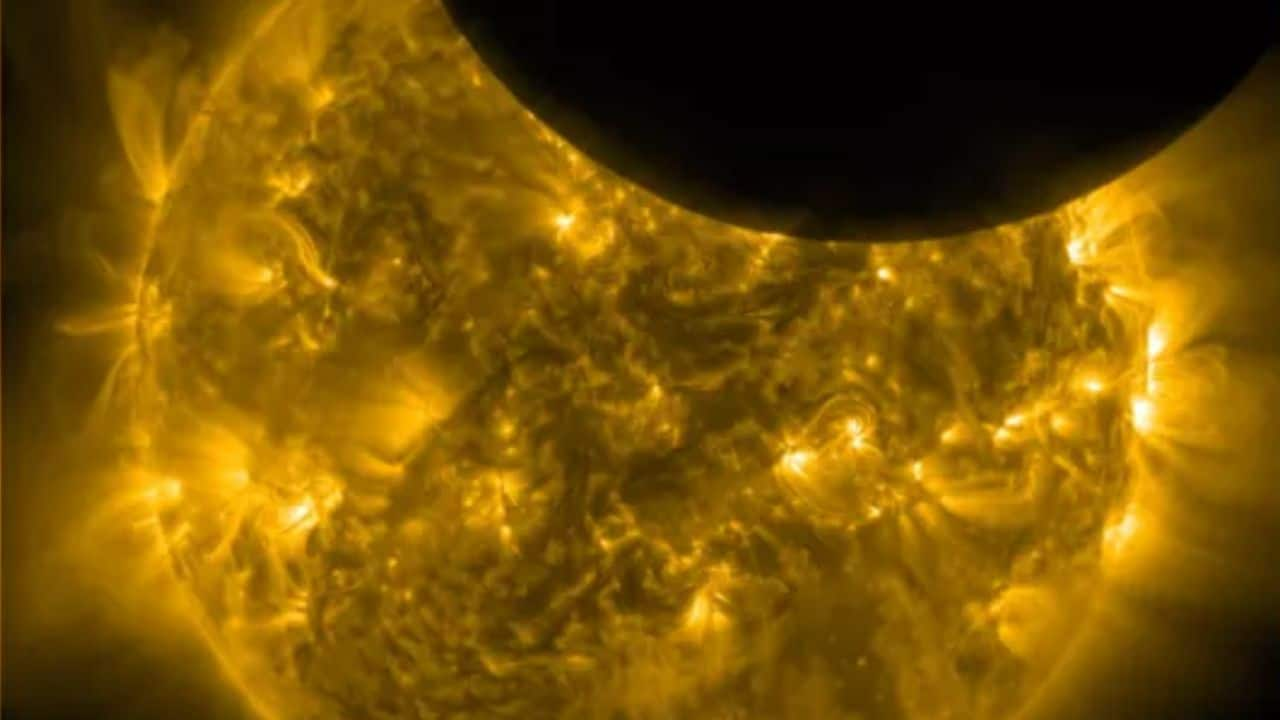



There are moments when the universe puts on a show. This time, Earth missed it—but NASA’s observatory didn’t. On Sunday, April 27, a partial solar eclipse unfolded quietly in space, hidden from human eyes but captured in remarkable detail by NASA’s Solar Dynamics Observatory (SDO).
Moon blocks 23% of Sun’s surface in spaceThe event, called a lunar transit, showed the moon passing in front of the sun. From SDO’s view, 23% of the solar surface was covered. The images reveal a large dark orb slowly drifting by, veiling nearly a quarter of the blazing star.
This eclipse could not be seen from Earth. It was only visible to space-based equipment like the SDO. According to Forbes, the spacecraft is semi-autonomous and constantly points at the sun. Launched in February 2010, it has watched several such events over the years.
NASA confirmed two more eclipses are on the way. A minor one is expected on May 25, covering just four per cent of the sun. Another, on July 25, will block a much larger 62% of the solar surface.
 NASA’s Solar Dynamics Observatory captured a solar eclipse on 27 April 2025, visible only from space (Image: NASA)Astronauts have witnessed eclipses too
NASA’s Solar Dynamics Observatory captured a solar eclipse on 27 April 2025, visible only from space (Image: NASA)Astronauts have witnessed eclipses tooThe SDO is not alone in capturing space eclipses. NASA recalled that several Apollo astronauts saw solar eclipses during their missions to the moon. While rare, such sightings offer stunning views not available to us on Earth.
The last eclipse visible from Earth happened in March. It was a lunar eclipse where the moon turned deep red, commonly called a Blood Moon. NASA explained that this red colour appears due to the same atmospheric effects that create red sunsets.
Future eclipses to watchNASA noted that the next solar eclipse visible from Earth will occur on September 21. This one will be visible in parts of New Zealand, the South Pacific and Antarctica.
Another total solar eclipse is scheduled for August 12, 2026. It will pass over eastern Greenland, western Iceland and northern Spain. During this short event, the moon will block the sun completely, revealing its glowing corona.
As always, space continues to hold secrets and scenes meant for those who look just a little further.
Discover the latest Business News, Sensex, and Nifty updates. Obtain Personal Finance insights, tax queries, and expert opinions on Moneycontrol or download the Moneycontrol App to stay updated!
Find the best of Al News in one place, specially curated for you every weekend.
Stay on top of the latest tech trends and biggest startup news.